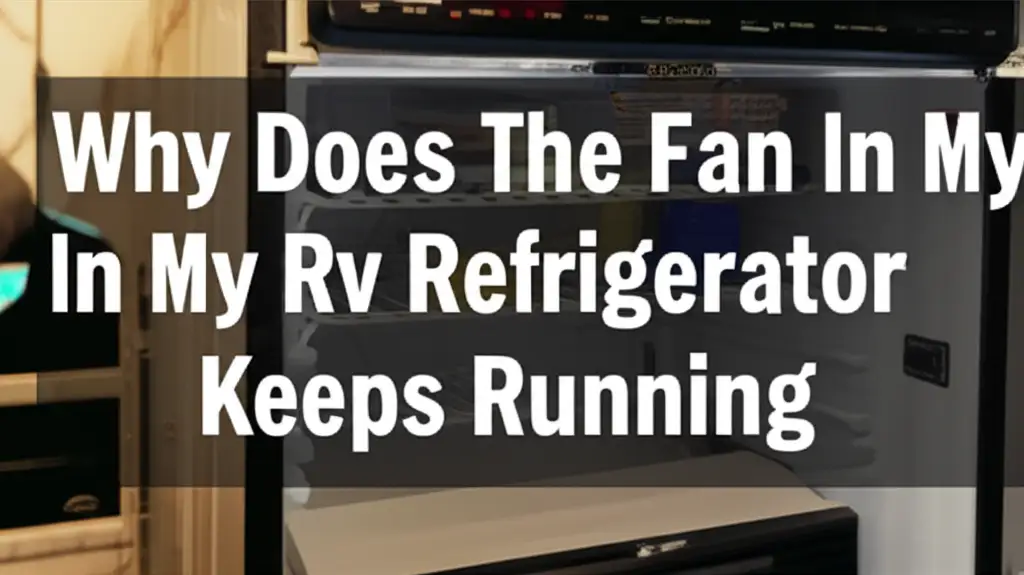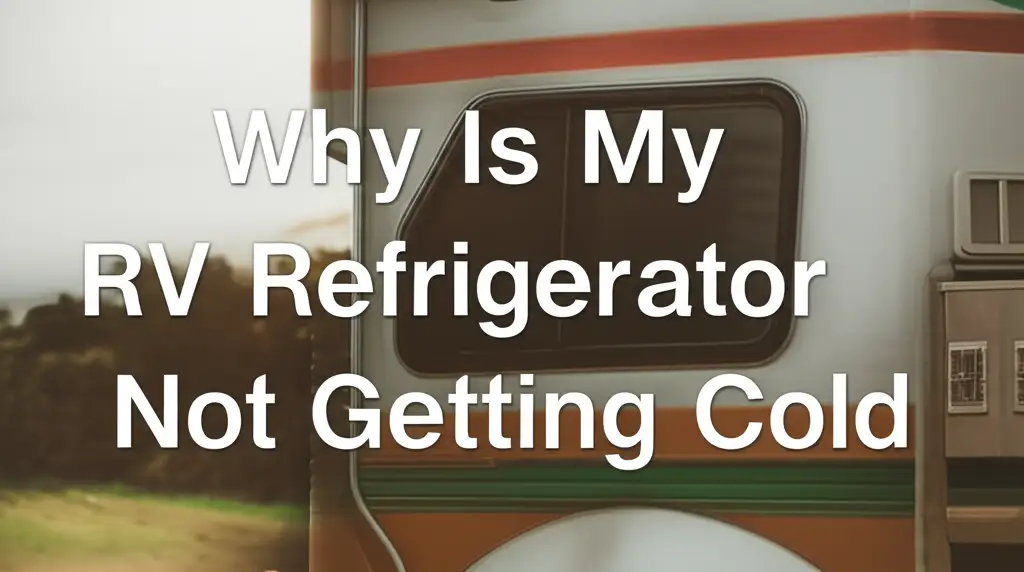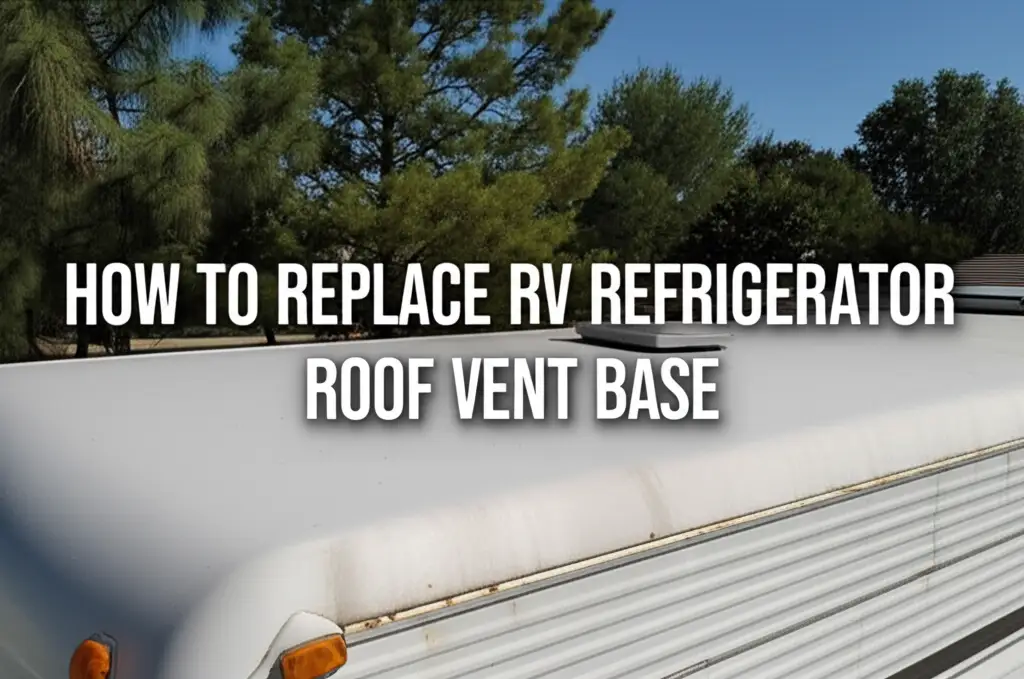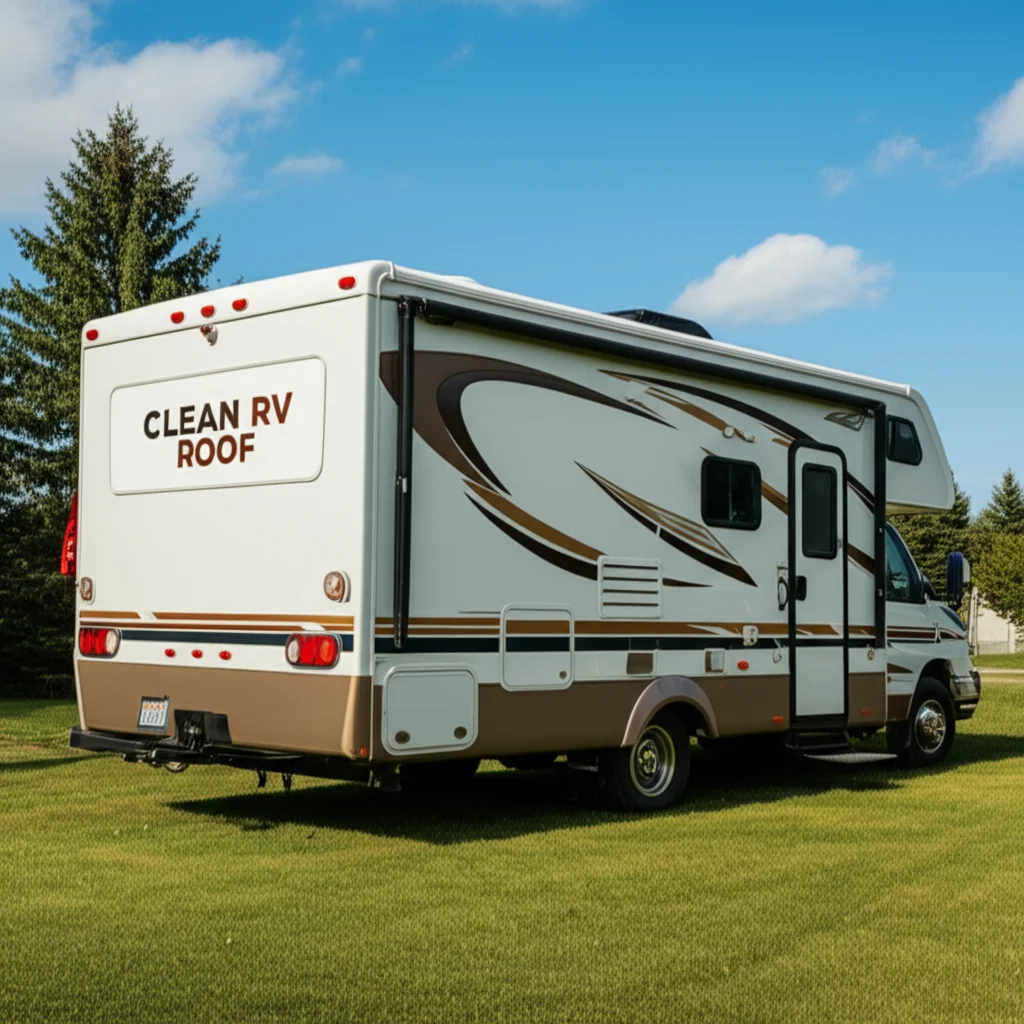· Todd Martin · RV Maintenance · 15 min read
Why Does My Rv Refrigerator Smell Like Ammonia
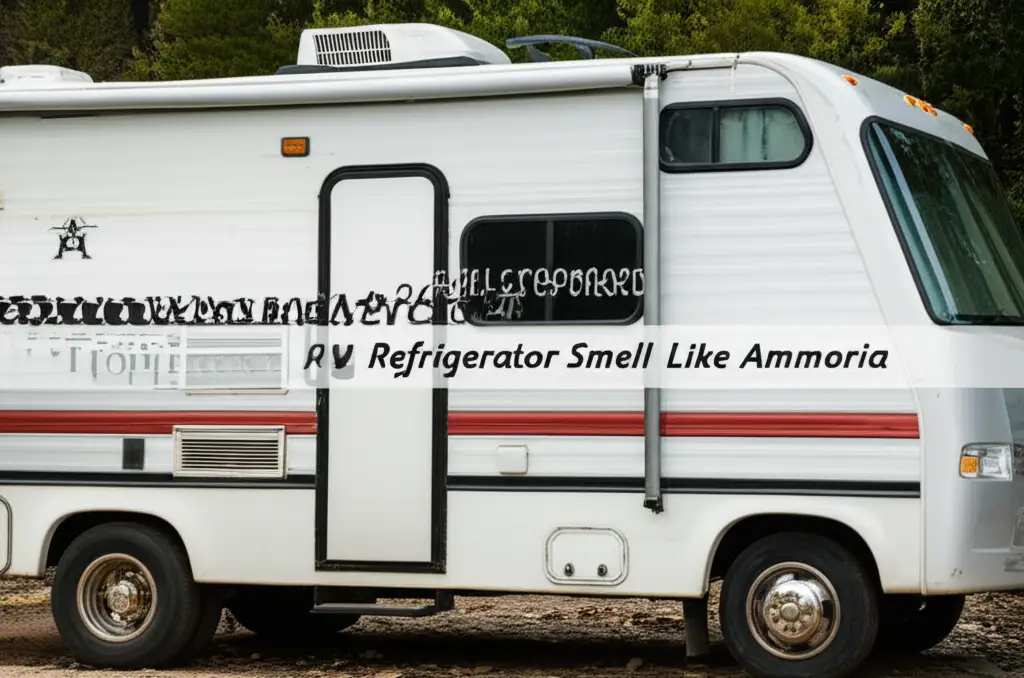
RV Refrigerator Smells Like Ammonia: What’s Happening?
Picture this: You are on a grand adventure, miles from home, enjoying the freedom of your RV. You open the refrigerator door, expecting fresh food, but instead, a strong, pungent odor hits you. Your RV refrigerator smells like ammonia. This is not just an unpleasant smell; it signals a serious problem. It means your refrigerator’s cooling system is likely compromised.
An ammonia smell from your RV refrigerator is a critical indicator. It tells you the sealed cooling unit has a leak. Understanding the cause and knowing how to act quickly protects your health and your RV investment. We will explore why this happens, what signs to look for, and immediate actions you need to take. This guide helps you address this issue safely and effectively. We will cover troubleshooting, repair options, and essential maintenance tips to prevent future problems.
Takeaway
- An ammonia smell indicates a leak in your RV refrigerator’s sealed cooling system.
- The leak releases toxic ammonia, creating a safety hazard.
- Look for a yellow, powdery residue or liquid around the cooling unit.
- Ventilate your RV immediately and avoid inhaling fumes.
- Turn off the refrigerator at once.
- Professional inspection and cooling unit replacement are often necessary.
Your RV refrigerator smells like ammonia because its sealed absorption cooling unit has a leak. This unit contains a solution of water, ammonia, and other chemicals. When a leak occurs, the ammonia gas escapes, creating a distinct, pungent odor. This failure makes the refrigerator unable to cool properly and presents a significant safety risk.
Understanding Your RV Refrigerator’s Cooling System
RV refrigerators use an absorption cooling system. This system differs from the compressor-based fridges found in homes. Instead of a compressor, it uses heat to circulate a chemical solution. The main components are ammonia, water, and hydrogen gas.
The absorption process begins with a heat source. This source, either electric or propane, heats the ammonia-water solution. As the solution heats, the ammonia vaporizes. This high-pressure ammonia gas then travels to a condenser.
In the condenser, the ammonia gas cools and turns back into a liquid. This liquid ammonia then flows into the evaporator coils. These coils are inside the refrigerator’s insulated cabinet. As the liquid ammonia evaporates in the evaporator, it absorbs heat from inside the fridge. This absorption cools the interior.
Finally, the ammonia gas mixes with hydrogen gas. This mixture creates a lower pressure, allowing the ammonia to be reabsorbed by the water. The solution then returns to the generator to restart the cycle. This continuous process allows the refrigerator to cool without moving parts, making it quiet and efficient for RV use. This design also means the entire system is sealed. A leak breaks this seal, allowing ammonia to escape.
The Primary Cause: Leaking Ammonia Coolant
If your RV refrigerator smells like ammonia, a leak in the sealed cooling unit is the almost certain cause. This smell is the most direct sign of system failure. The cooling unit is a closed system. It circulates a specific blend of chemicals, including ammonia. Any breach releases these chemicals.
The ammonia within the system is under pressure. Over time, metal fatigue, corrosion, or physical damage can compromise the integrity of the cooling unit’s tubing. This creates a small crack or pinhole. Once this breach occurs, the ammonia gas and solution escape. The distinct odor immediately becomes noticeable.
Beyond the smell, other signs indicate a leak. You might see a yellowish or greenish-yellow powder around the back of the refrigerator. This powder is crystallized ammonia. It forms as the liquid ammonia evaporates. You may also find a gooey, oily residue. This residue is rust inhibitor or other chemicals from the cooling solution. These visual cues confirm a coolant leak. Without a sealed system, the refrigerator cannot maintain cooling. The ammonia leak stops the entire cooling process. This makes the refrigerator useless until repaired.
Identifying the Source of the Ammonia Smell
Finding the exact source of the ammonia smell is important. This helps you understand the extent of the damage. The smell often comes from the back of the refrigerator. This area houses the cooling unit’s coils and components. You will need to access the rear of the fridge. This usually means opening the exterior access panel on your RV.
Once the panel is open, inspect the cooling unit carefully. Look for signs of leakage. As mentioned, yellow or green-yellow powder is a common indicator. This powder often collects on the coils, in the drip pan, or on the floor of the compartment. It indicates where the ammonia has leaked and then dried. You might also see an oily, rusty, or discolored liquid. This liquid is the remaining solution that has escaped. The liquid often leaves streaks or puddles on components or the floor.
Pay close attention to the bends and welds in the tubing. These areas are prone to developing small cracks over time. A small puff of smoke or vapor might even be visible if the leak is active and the system is still warm. However, do not get too close or inhale the fumes directly. Remember, the smell itself is the strongest sign. If you see these visual cues along with the odor, you have confirmed a cooling unit failure. You should not attempt to fix the leak yourself.
Immediate Safety Steps When Ammonia is Present
An ammonia smell from your RV refrigerator requires immediate action. Ammonia gas is toxic and corrosive. It can cause irritation to your eyes, skin, and respiratory system. In high concentrations, it is dangerous. Your first priority is always safety.
1. Ventilate Your RV: Open all windows and vents immediately. Use your RV’s exhaust fans or ceiling fans to draw air out. This helps dissipate the ammonia gas. Avoid breathing the fumes directly. If the smell is very strong, consider evacuating the RV until it has aired out.
2. Turn Off the Refrigerator: Disconnect all power to the refrigerator. Turn off both the electric power and the propane supply. This stops the heating process. Stopping the heat prevents more ammonia from vaporizing and leaking. It also removes any potential ignition source. Ammonia is flammable in high concentrations. For guidance on related power issues, you might want to read Why Does My RV Refrigerator Not Work on Electric.
3. Use Personal Protective Equipment: If you need to inspect the unit or clean up a small spill, wear gloves and eye protection. A respirator mask designed for ammonia fumes is also helpful. Avoid direct skin contact.
4. Keep People and Pets Away: Ensure no one lingers near the leaking refrigerator. Children and pets are more susceptible to the effects of ammonia.
5. Avoid Ignition Sources: Do not smoke or use open flames near the RV. Ammonia is combustible under certain conditions. Once the immediate danger is addressed, you can begin to consider the next steps for repair or replacement.
Troubleshooting Common RV Refrigerator Problems
While an ammonia smell directly points to a cooling unit leak, other RV refrigerator problems exist. Sometimes, these issues can precede a leak or mimic related symptoms. Understanding them helps in overall RV maintenance.
One common issue is the refrigerator not cooling adequately. This often happens if the RV is not level. RV absorption refrigerators need to be level to work properly. The cooling solution requires gravity to flow correctly through the system. If your RV is parked on a significant slope, the circulation can become sluggish or stop. This leads to poor cooling performance. To learn more about this, see Does an RV Refrigerator Need to Be Level. Always park your RV as level as possible for optimal fridge operation.
Another issue can be problems with the refrigerator fan. Many RV refrigerators have a fan on the exterior cooling unit. This fan helps dissipate heat from the coils. If this fan stops working or works intermittently, the refrigerator struggles to cool efficiently. This can put stress on the system over time. You might notice the fan cycling on and off excessively. For more information on this, check out Why Does My RV Refrigerator Fan Go On and Off.
Sometimes, issues with power supply can impact cooling. An RV refrigerator may struggle to work on electric power if the element is failing. Or, it may struggle on propane if the burner is dirty. These issues affect the heat source needed for the absorption cycle. While these problems do not directly cause an ammonia leak, they can lead to inefficient operation. Inefficient operation adds stress to the cooling unit over its lifespan. A failing cooling unit might initially show poor cooling before the leak becomes apparent. It is important to address cooling problems early. This might prevent more serious damage, such as an ammonia leak.
Repairing an Ammonia Leak: When to DIY and When to Call a Pro
Repairing an ammonia leak in an RV refrigerator is not a simple task. The cooling unit is a sealed, high-pressure system. It contains hazardous chemicals. For these reasons, attempting a DIY repair of a leaking cooling unit is strongly discouraged. It is dangerous and usually ineffective.
Most RV refrigerator manufacturers do not offer repair kits for cooling unit leaks. When a leak occurs, the cooling unit is compromised. The only reliable solution is replacement. You have two main options for replacement:
- Replace the entire refrigerator: This is the most straightforward option. It involves removing the old refrigerator and installing a new one. This ensures you have a brand-new, fully functional unit. It also updates your appliance. This option is often expensive.
- Replace only the cooling unit: This option is usually less expensive than replacing the entire refrigerator. You buy a new cooling unit, which is the “engine” of the fridge. Then you install it into your existing refrigerator cabinet. This approach reuses the cabinet, door, and interior components. This job requires skill and specific tools. It involves disconnecting refrigerant lines and properly sealing the new unit. For most RV owners, this is still a job for a professional.
When should you call a professional? Immediately after detecting an ammonia leak. An RV service technician has the right safety gear and expertise. They can safely remove the old cooling unit. They also install a new one correctly. They understand the intricacies of RV appliance systems. They ensure the new unit is properly sealed and tested. Trying to patch a leak yourself is a temporary fix at best. It is unlikely to hold under pressure. It also risks continued exposure to harmful ammonia. Save yourself the danger and frustration. Get professional help for an ammonia leak.
Preventive Maintenance to Avoid Ammonia Leaks
While you cannot prevent every possible failure, regular maintenance helps extend your RV refrigerator’s life. It can also reduce the chance of an ammonia leak. Proper care and attention keep your unit running efficiently.
1. Keep Your RV Level: This is perhaps the most crucial tip for absorption refrigerators. As discussed, these fridges rely on gravity for coolant circulation. Operating them off-level puts strain on the system. It can cause crystallization of salts inside the tubing. Over time, this can lead to blockages and eventual leaks. Always try to park your RV as level as possible. Use leveling blocks or an automatic leveling system. Even a slight tilt can impact performance. This point is so important, it’s worth reviewing information on why Does an RV Refrigerator Have to Be Level to Work.
2. Ensure Adequate Ventilation: The cooling unit at the back of your RV refrigerator needs good airflow. Blocked vents or a dirty condenser fan cause heat buildup. This makes the system work harder. It also accelerates wear on the cooling unit. Regularly check the exterior access panel. Make sure it is clear of debris like leaves, dirt, or insect nests. Ensure the fan, if present, is clean and operating correctly.
3. Monitor Cooling Performance: Pay attention to how well your refrigerator cools. Is it taking longer than usual to get cold? Are contents not staying as cool as they should? A decline in cooling efficiency can be an early sign of a problem. It could be a struggling cooling unit. If your RV refrigerator is taking longer than expected to cool down, this could be a related issue. You can find more information on this here: How Long Does RV Refrigerator Take to Get Cold. Addressing minor performance issues early might prevent major failures like an ammonia leak.
4. Inspect the Cooling Unit Regularly: Periodically, open the exterior access panel. Visually inspect the cooling unit coils and tubing. Look for any signs of corrosion, rust, or discoloration. Catching these issues early might give you time to address them before a leak forms. Early signs of a leak include the yellow powder or oily residue we discussed earlier. A proactive check helps you spot trouble before it becomes a hazard. By following these preventive steps, you invest in the longevity and safety of your RV refrigerator.
What Happens When an RV Refrigerator Leaks Ammonia?
When an RV refrigerator leaks ammonia, several things happen. First, you notice a strong, pungent odor. This smell is unmistakable. It quickly fills the RV’s interior. Second, the refrigerator stops cooling effectively. The absorption cycle cannot work without a sealed system and its full chemical charge. Your food will warm up quickly.
Visually, you might see a yellow or greenish-yellow powder. This powder is crystallized ammonia. It appears where the leak occurs. You might also find an oily, rusty, or sticky residue. This comes from the corrosion inhibitors in the coolant solution. This residue confirms a breach in the cooling unit’s tubing.
Beyond the immediate signs, the leaking ammonia poses safety risks. Ammonia gas is toxic. It irritates eyes, skin, and the respiratory system. Prolonged exposure can be harmful. In certain concentrations, ammonia is also flammable. This means a leak can create a fire hazard. The compromised cooling unit means the refrigerator is no longer functional. It needs immediate attention. You cannot “recharge” a leaking RV cooling unit. A leak indicates irreversible damage. The entire cooling unit requires replacement.
FAQ Section
Can I still use my RV fridge if it smells like ammonia?
No, you must stop using your RV refrigerator immediately if it smells like ammonia. The smell indicates a dangerous leak in the sealed cooling system. Ammonia gas is toxic and corrosive. Continued operation poses a serious health hazard due to gas exposure. It also carries a potential fire risk. Turn off all power to the fridge and ventilate your RV at once.
What does a failed RV cooling unit look like?
A failed RV cooling unit often shows specific visual signs. The most common is a yellowish or greenish-yellow powder or crystalline residue around the coils and tubing. This is dried ammonia. You might also see a rusty, oily, or sticky liquid residue. This comes from the coolant solution. Sometimes, bulges or dark discoloration on the tubing itself indicate a stressed or failed point.
How long does an RV refrigerator cooling unit last?
The lifespan of an RV refrigerator cooling unit varies significantly. On average, you can expect a unit to last 10 to 15 years. However, factors like consistent leveling, proper ventilation, maintenance, and usage frequency play a big role. Some units fail sooner due to stress or manufacturing defects. Others might last longer with excellent care.
Is an ammonia leak dangerous?
Yes, an ammonia leak is dangerous. Ammonia gas is a hazardous chemical. It causes irritation to your eyes, nose, throat, and lungs. High concentrations can lead to serious respiratory issues or burns. It can also be flammable under specific conditions. Always prioritize safety. Ventilate the area and avoid direct contact or inhalation of the fumes.
Can I recharge my RV refrigerator with ammonia?
No, you cannot recharge an RV refrigerator with ammonia. The cooling unit is a factory-sealed system. If it leaks ammonia, it means the system is compromised. You cannot simply refill it. Any attempt to patch the leak or add more ammonia will fail. The only safe and effective solution for a leaking cooling unit is to replace the entire unit.
How much does it cost to fix an ammonia leak in an RV fridge?
Fixing an ammonia leak typically means replacing the cooling unit or the entire refrigerator. Replacing just the cooling unit can range from $800 to $1,500 for parts and labor. Replacing the entire RV refrigerator can cost between $1,500 and $3,000 or more, depending on the model and size. These costs do not include any potential damage from the leak itself.
Conclusion
Detecting an ammonia smell from your RV refrigerator is a clear warning sign. It indicates a critical failure of the sealed cooling system. This problem is serious. It poses significant safety risks due to toxic gas exposure and potential fire hazards. You now understand that this distinct odor means the cooling unit has a leak. Immediate action is essential for your safety and the longevity of your RV.
We explored the absorption cooling process. We discussed how a breach allows ammonia to escape. You learned to look for yellow powder or oily residue as additional proof. Taking immediate safety steps, like turning off power and ventilating the RV, protects you. While other RV fridge issues exist, an ammonia smell is unique. It demands professional attention. Do not attempt a DIY fix for an ammonia leak. Replacing the cooling unit or the entire refrigerator is the only safe solution. Proper leveling and maintenance help extend your RV refrigerator’s life. They also reduce the risk of future leaks. Prioritize safety and act quickly. Your RV adventures depend on functional and safe appliances. Consult an RV appliance professional for proper diagnosis and repair.
- RV refrigerator
- Ammonia smell RV
- RV fridge repair
- RV coolant leak
- Absorption refrigerator
- RV appliance issues
- RV safety


